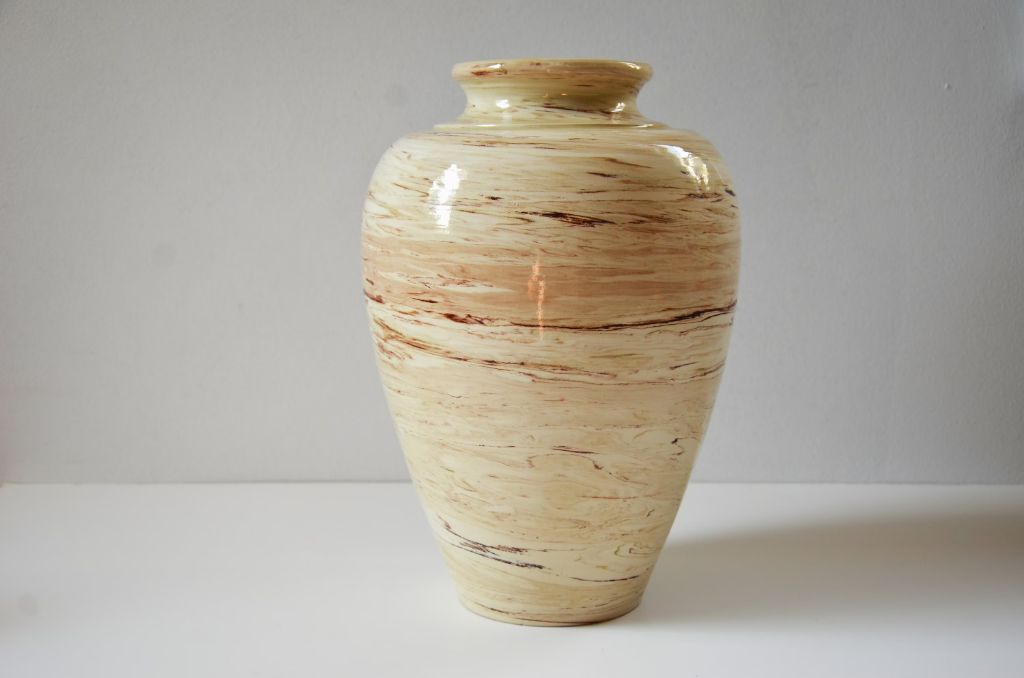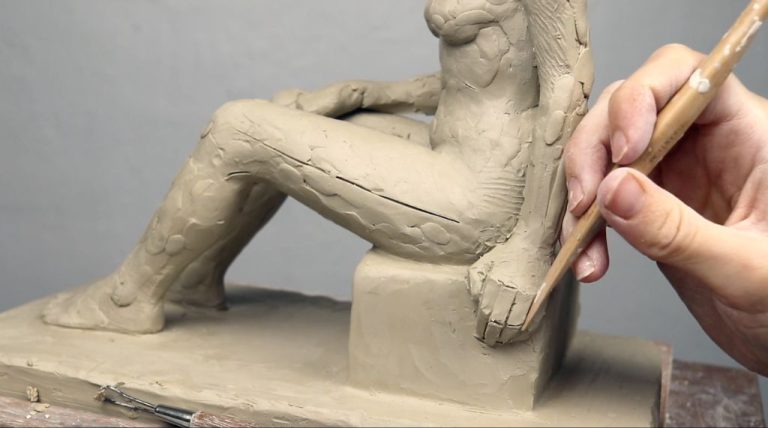Is Flavia A Bitossi?
The Flavia brand of Italian ceramics has a long and storied history dating back to the early 20th century. Flavia was founded in 1921 by Guido Bitossi in Montelupo, Italy, as part of the larger Bitossi ceramics company (Ceramiche Flavia). The Flavia brand produced beautiful maiolica wares and decorative ceramics in traditional Italian Renaissance styles.
Over the years, there has been some confusion over whether Flavia is actually part of the Bitossi brand or a separate entity. This is because after Guido Bitossi’s death, his three sons split the company into three brands: Raynaud, Ilva, and Flavia. So while Flavia started as a Bitossi product line, it later became its own distinct brand once the company divided. However, all three brands shared a similar aesthetic and came out of the same origins at Bitossi. This article will examine the histories of both Bitossi and Flavia and analyze their styles, designs, and markings to determine the relationship between the two iconic Italian ceramic brands.
Background on Bitossi Ceramics
Bitossi Ceramiche was founded in Florence, Italy in 1946 by Carlo Bitossi. The company specialized in innovative ceramic designs and new manufacturing techniques like colored bodies glazes. Some of their most iconic early pieces were the African and Ray series designed by Elena and Aldo Londi in the 1950s which featured abstract animal motifs https://leclaireur.com/it-eu/collections/bitossi-ceramiche.
Throughout the 1960s and 70s, Bitossi collaborated with renowned designers like Joe Columbo, who created the experimental Textures collection. Other notable Bitossi designs include the woolly surfaced Orbite vases by Sandro Negri and the striking black and white geometrics of the Memphis collection https://leclaireur.com/it-eu/collections/bitossi-ceramiche. Bitossi pioneered bold new glazing techniques and imaginative shapes that made their ceramics highly unique and collectible.
Some of Bitossi’s most prized collectibles today include the colorful Pop Art-inspired Graphic Design pieces first produced in the 1960s. Carlo Bitossi’s innovative vision and collaborations cemented Bitossi as one of Italy’s most influential ceramic studios.
Flavia Ceramics Brand History
The Flavia ceramics brand was founded in 1921 by Guido Bitossi in Montelupo, Italy (British Museum, 2023). The company originally produced traditional Renaissance-style maiolica pottery and terracotta wares. In the 1930s, Carlo Bitossi, Guido’s son, took over and shifted the company’s focus to more contemporary and innovative styles influenced by Art Deco.
Some of Flavia’s most notable early designers included Gio Ponti, who created sleek cylindrical vases, and Piero Fornasetti, who designed decorations with surrealist motifs. Over the decades, Flavia collaborated with famous designers like Ettore Sottsass to produce groundbreaking pieces in new shapes and vibrant Pop Art colors. By the 1960s, Flavia was at the forefront of Italian avant-garde ceramics.
Important innovations included the introduction of the glossy metallic glazes Azurite and Etruscan Red in the 1950s. Major collections included the Africa and Daphne series by Sottsass in the 1960s, which featured tribal masks and geometric patterns. Flavia’s collaborations with designers established the brand as a leader in modernist Italian ceramic design.
Comparison of Styles and Designs
While Flavia and Bitossi pieces share similarities in their modern, colorful, and geometric styles, there are some key differences in their designs. Bitossi is known for its innovative use of bright, primary colors like vibrant reds, blues, and yellows paired with black accents in its ceramics. Flavia incorporates more pastel hues like mint greens, soft pinks, and muted blues into its palette. In terms of shapes, Bitossi favors geometric angular forms while Flavia integrates softer, curved silhouettes into many of its pieces.
The Bitossi ceramics company was founded in the 1920s by the Bitossi family. Many of its most iconic mid-century designs came from the innovative work of designers like Ettore Sottsass. Flavia was started a bit later in 1955 by a businessman named Adriano Scamporrino who hired talented ceramicists like Sandro Negroni to create the company’s artistic ceramics.
Manufacturing and Production
The original Bitossi ceramics were produced in Montelupo Fiorentino, Italy starting in the 1920s. The company was founded by Guido Bitossi and gained renown for its Renaissance-inspired maiolica pottery and terra-cotta wares. Bitossi introduced innovative designs with bold colors and became known for its decorative vases, bowls, and other ornamental objects.
In the 1960s, Bitossi began producing a more contemporary and modern line of ceramics under the Flavia brand. These were designed by the architect Carlo Zauli and marked a stylistic departure from the traditional Bitossi wares. According to one source, Ceramiche Flavia, the Flavia pottery was manufactured at the same facilities in Montelupo Fiorentino using many of the same techniques as the vintage Bitossi pieces.
Both Bitossi and Flavia ceramics were handmade and utilized local clay deposits and minerals for the glazes. However, Flavia introduced brighter colors and simpler, more geometric forms compared to Bitossi’s ornate decorative style.
Markings and Logos
There are a few key markings to look for when identifying vintage Bitossi pieces versus modern Flavia ones. According to Poof Estate Services, authentic vintage Bitossi pieces will be marked with the word “Bitossi” and the location of the factory in Italy where they were produced, such as “Bitossi – Italy” or “Bitossi – Tuscany.” Many also include the design’s pattern name.
In contrast, Flavia markings lack any reference to Bitossi. They are simply marked “Flavia – Italy” or “Flavia” and then the pattern name. This reflects the fact that Flavia was established as a separate brand from Bitossi in the 1980s after the Raymor company acquired both brands.
The logos used have also evolved over time. Originally the Bitossi brand used a capital “B” logo. After Raymor took over in the 1980s, they introduced the two tornado-shaped Fs that represent the double “F” in Flavia. This became the primary logo for pieces made by the company, whether marked Flavia or Bitossi. In the 2000s, the brands were split apart again under new ownership, returning to distinct Bitossi and Flavia logos.
Modern Day Ownership
Today, the Bitossi and Flavia ceramics brands are both owned by the Italian company Società Ceramica Italiana. Società Ceramica Italiana acquired the Bitossi brand in the 1980s after Guido Bitossi’s death in 1968. The company continued to produce Bitossi ceramics using Guido Bitossi’s original molds and techniques (SirMittens, 2022).
Flavia, established in 1967 by Carlo Zauli, was also acquired by Società Ceramica Italiana. While the two brands originated separately, they are now produced under the same parent company using the original techniques established by their founders (Elle Decoration, 2022). Today, authentic Bitossi and Flavia pieces are marked with the trademarks of Società Ceramica Italiana, indicating the shared modern ownership.

Rarity and Value
Both Bitossi and Flavia ceramic pieces from the 1950s-1970s have become highly collectible and valuable for vintage Italian ceramic lovers. However, original Bitossi designs and early production pieces tend to be more rare and fetch higher prices at auction compared to Flavia.
Some of the most coveted and valuable Bitossi ceramics include:
- Early Ray designs from the 1950s-1960s like the famous Blu Ray vase
- Pieces designed by noted designers like Ettore Sottsass and Joe Colombo
- Rare production runs and unique glazes like the Rame metallic copper glaze
- One-of-a-kind prototypes and artist collabs
For Flavia, some of the most valuable pieces include:
- Early designs and glazes from the 1960s-1970s before mass production
- Unique glazes like the Pezzato speckled glaze
- Rare oxidized metallic glazes
- Pieces with strong 1970s style and colors
While Flavia pieces can still command good prices from collectors, vintage Bitossi remains the most sought after and prized Italian ceramic with record sales topping $20,000 or more for the rarest pieces at auction.
Identifying Authentic Pieces
When trying to determine if a piece of pottery is an authentic vintage Bitossi or Flavia, there are some key indicators to look for.
First, examine the bottom of the piece. Authentic Bitossi and Flavia ceramics from the 1960s-1980s will have a rough, unglazed bottom that is slightly concave (Poof Estate Services, 2017). If the bottom is smooth and flat, it is likely a modern day reproduction or fake. Genuine vintage pieces also often have the Bitossi Italy signature etched into the bottom.
Additionally, vintage Bitossi glazes have a certain glossy, almost iridescent quality and depth of color that is hard to reproduce in fakes. Examine the glaze closely under good lighting. Authentic glazes should have very few if any bubbles, cracks, or inconsistencies.
When checking markings, authentic vintage marks will say “Bitossi” or “Bitossi Italy” and often include the Flavia or Ray design lines. Pieces marked only with “Italy” or “Made in Italy” postdate the Ray and Flavia era and are not true vintage (Worthpoint, 2022).
Study the form and detailing of any decorative elements. Fakes tend to have cruder, less refined detailing than originals. Look at images of authenticated pieces to compare.
Consult an expert if still uncertain about authenticity. While identifying fakes takes some knowledge, with practice one can learn how to spot true vintage Bitossi and Flavia.
Conclusion
In summary, while Flavia and Bitossi ceramics share some similar characteristics in style, design, and production methods from their roots in Italy, there are also clear differences between the two brands in their markings, ownership, and rarity that distinguish them from one another.
Based on the research presented, Flavia ceramics, though sharing some similarities with the more famous Bitossi brand, should be considered a distinct brand in their own right. The Flavia markings and logos, different modern-day ownership, and greater rarity and value of authentic Bitossi pieces compared to Flavia make it clear the two brands are distinct Italian ceramic lines.
Though high quality examples from both brands command value for their craftsmanship and design, Flavia should not be considered or marketed as Bitossi. Collectors and owners should evaluate Flavia ceramics based on their own merits as an Italian ceramic brand, and appreciate them for the quality pieces they are without confusing them for or attributing them to the Bitossi name.





